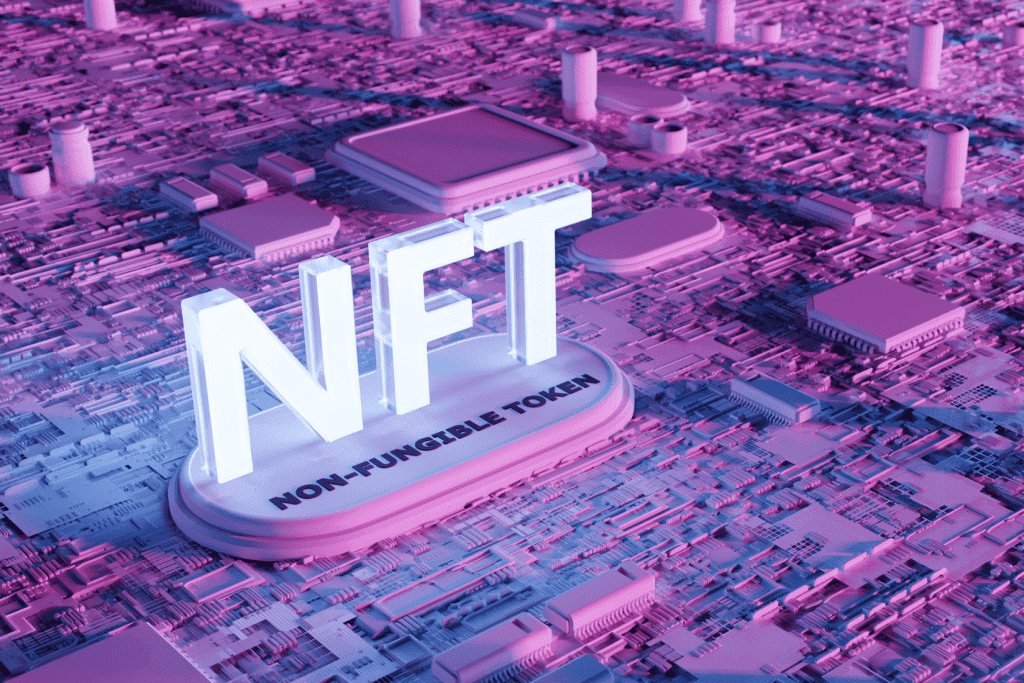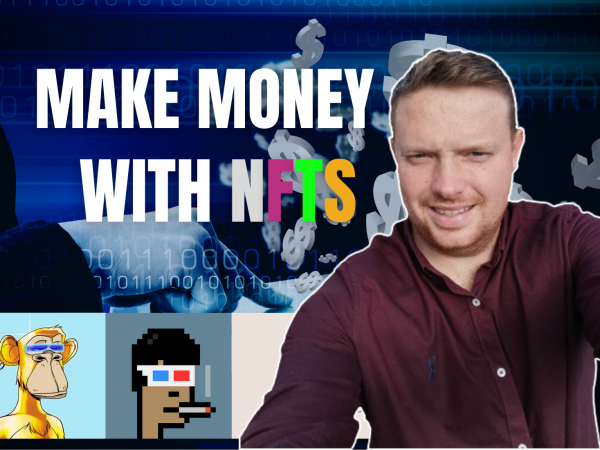The Basics of Non-Fungible Tokens (NFT’s): What are they and How Do They Work?
The world of digital tokens is growing and evolving at a rapid pace. From concerns about security and manipulation to the rise of non-fungible tokens (NFTs), it’s an exciting time for anyone interested in blockchain technology. NFTs have become particularly popular lately, thanks to their ability to represent unique digital assets that can be sold, stored securely, and verified independently.
Many ICOs, tokens, and blockchain projects are based on the idea of ‘unique digital tokens’ that can be used to represent an entity or a thing. For example: a token that represents membership in a particular association, another token which has been minted as a limited edition artwork, and so on. Such types of tokens are known as non-fungible tokens (NFTs) and have grown in popularity within the crypto space over the past year.
Non-fungible tokens are unique digital tokens that have properties similar to real world objects such as identities and attributes. Unlike fungible tokens such as ERC-20 standard tokens that can be substituted for other identical tokens like trading cards or coins, non-fungible ones cannot be replaced or exchanged for other tokens of the same type. Today we will explore everything you need to know about non-fungible tokens, their benefits, and examples of projects that use them.
You can also learn how to make money with NFT’s with the Passive buddies Youtube video – ‘How To Make Money With NFTs As A Beginner In 2022 – [4 Different Easy Ways]’.
What is a Non-Fungible Token (NFT)?

A non-fungible token is one that can be defined and identified as a unique asset with specific features and characteristics. The token can be verified and traced throughout the entire supply chain to ensure that it isn’t being swapped or replicated.
Fungible tokens are tokens that can be exchanged for other tokens of the same type, even if they are of different quantities. For example, a quantity of gold coins can be exchanged for another quantity of gold coins. The fungible token is interchangeable, and no single coin is more special than another. Fungible tokens are used in many tokenized ecosystems, and they are also referred to as “ERC-20 Tokens”. They are used to access decentralised applications, as well as crowdfunding activities.
Non-fungible tokens can be a difficult concept to fully understand due to their complex nature and the fact that they are still a relatively new concept. To get a fully rounded understanding of NFT’s so you can make an informed decision on whether NFT’s are for you or not you find out more about what Non-fungible tokens are.
The Difference Between Fungible and Non-Fungible Tokens
Fungible tokens are tokens that are interchangeable and have the same value. They are used as a form of currency and can be substituted for one another. Fungible tokens are used in many tokenized ecosystems, and they are also referred to as “ERC-20 Tokens”. They are used to access decentralised applications, as well as crowdfunding activities.
Non-fungible tokens are unique digital tokens that have properties similar to real world objects such as identities and attributes. Unlike fungible tokens such as ERC-20 standard tokens that can be substituted for other identical tokens like trading cards or coins, non-fungible ones cannot be replaced or exchanged for other tokens of the same type.
Non-fungible tokens have been used in a range of industries, including gaming, virtual reality, and real estate. They have also been used in tokenized ecosystems for the creation of unique digital assets.
Benefits of Non-Fungible Tokens
The benefits of non-fungible tokens (NFTs) can be explored by examining specific use cases. Here are some benefits of NFTs that showcase the advantages of this type of token:
- Unique identity: With NFTs, you can verify and trace the ownership of an asset, as well as its authenticity. This enables you to know exactly where your asset came from and where it has been to ensure that it is not counterfeit.
- Liquidity: Because NFTs represent unique assets, they allow users to own and trade items that they can’t otherwise obtain.
- Trust: When you use NFTs to represent ownership, you can trust the information provided about the assets.
- Security: Because assets are represented by NFTs and not physical items, they are less likely to be stolen or damaged.
It’s evident that NFT’s have plenty of advantageous use cases and benefits that you can make the most of if you decide to dive into the world of NFT’s. You can explore even more benefits and advantages of NFT’s and discover why NFT’s are such a big deal right now. Although there are also risks associated with NFT’s that you should also be aware of and consider there are also a number of ways you can make money with Non-fungible tokens.
How to Identify Fungibility and NFTs?

The key difference between fungible and non-fungible tokens is in their ability to be substituted for other tokens. Tokens that can be substituted for other tokens of the same type are fungible, but non-fungible tokens are unique and can’t be substituted for other tokens.
There are several ways to identify whether a token is fungible or non-fungible. Here are some of them.
- Understanding the token’s purpose: The first thing you can do is to understand the token’s functionality. Tokens that are designed to be interchangeable can be considered fungible.
- Understanding the token’s design: Another way you can identify whether a token is fungible or not is by analyzing its design. For example, if the token is designed to be a specific type of service.
- Undertaking token analysis: You can also identify whether a token is fungible or non-fungible by undertaking token analysis.
6 Popular NFT use cases
The uses of NFTs span across many industries, including gaming and virtual reality, real estate, artwork, music, and the Internet of Things (IoT). Here are 5 popular NFT use cases:
- Artwork Authentication: You can use NFTs to verify the authenticity of artwork, as well as to track ownership. With this ability, you can ensure that the artwork is not counterfeit.
- Tokenized Ownership: NFTs can be used to tokenize the ownership, licensing, and leasing of real-world assets.
- Smart Property: You can use NFTs to create smart property, where the token is programmed to interact with the property.
- Gaming Assets: NFTs can be used to represent and monetize gaming assets such as characters, weapons, and levels.
- Virtual Reality Assets: VR assets can be tokenized, tracked, and traded using NFTs.
From this I hope the idea that NFT’s have plenty of advantages, benefits and use cases has been highlighted. However, on the flip side NFT’s like most blockchain and crypto assets are highly volatile and can also be considered to be high risk. This is why it is important to consider careful whether you should invest in NFT’s.
Want to learn more about how you can make money with NFT’s as a beginner in 2022? Watch the entertaining Passive buddies Youtube video – ‘How To Make Money With NFTs As A Beginner In 2022 – [4 Different Easy Ways]’.
Conclusion
The world of digital tokens is growing and evolving at a rapid pace. From concerns about security and manipulation to the rise of non-fungible tokens (NFTs), it’s an exciting time for anyone interested in blockchain technology.
NFTs have become particularly popular lately, thanks to their ability to represent unique digital assets that can be sold, stored securely, and verified independently. Many ICOs, tokens, and blockchain projects are based on the idea of “unique digital tokens” that can be used to represent an entity or a thing. For example: a token that represents membership in a particular association, another token which has been minted as a limited edition artwork, and so on. Such types of tokens are known as non-fungible tokens (NFTs) and have grown in popularity within the crypto space over the past year.
Non-fungible tokens are unique digital tokens that have properties similar to real world objects such as identities and attributes. Unlike fungible tokens such as ERC-20 standard tokens that can be substituted for other identical tokens like trading cards or coins, non-fungible ones cannot be replaced or exchanged for other tokens of the same type.
If you want to learn more about how you can make money with NFT’s in 2022 then you can also read our other Passive buddies blog – ‘How To Make Money With Non-Fungible Tokens (NFT’s): Money Making Strategies For 2022’.





